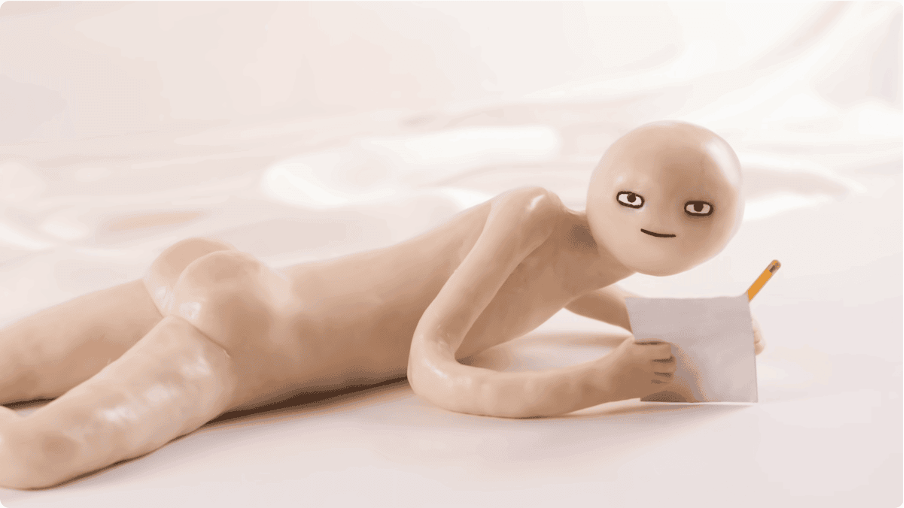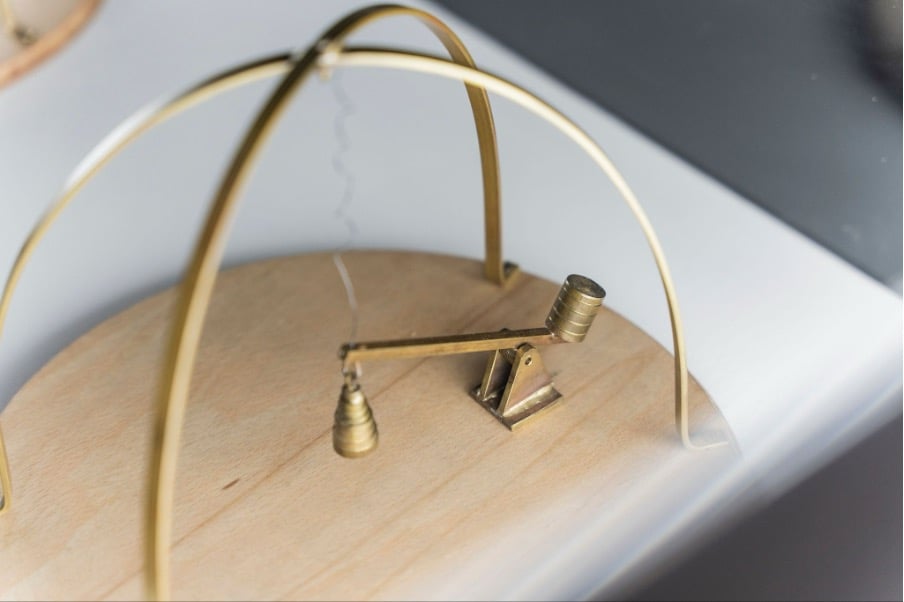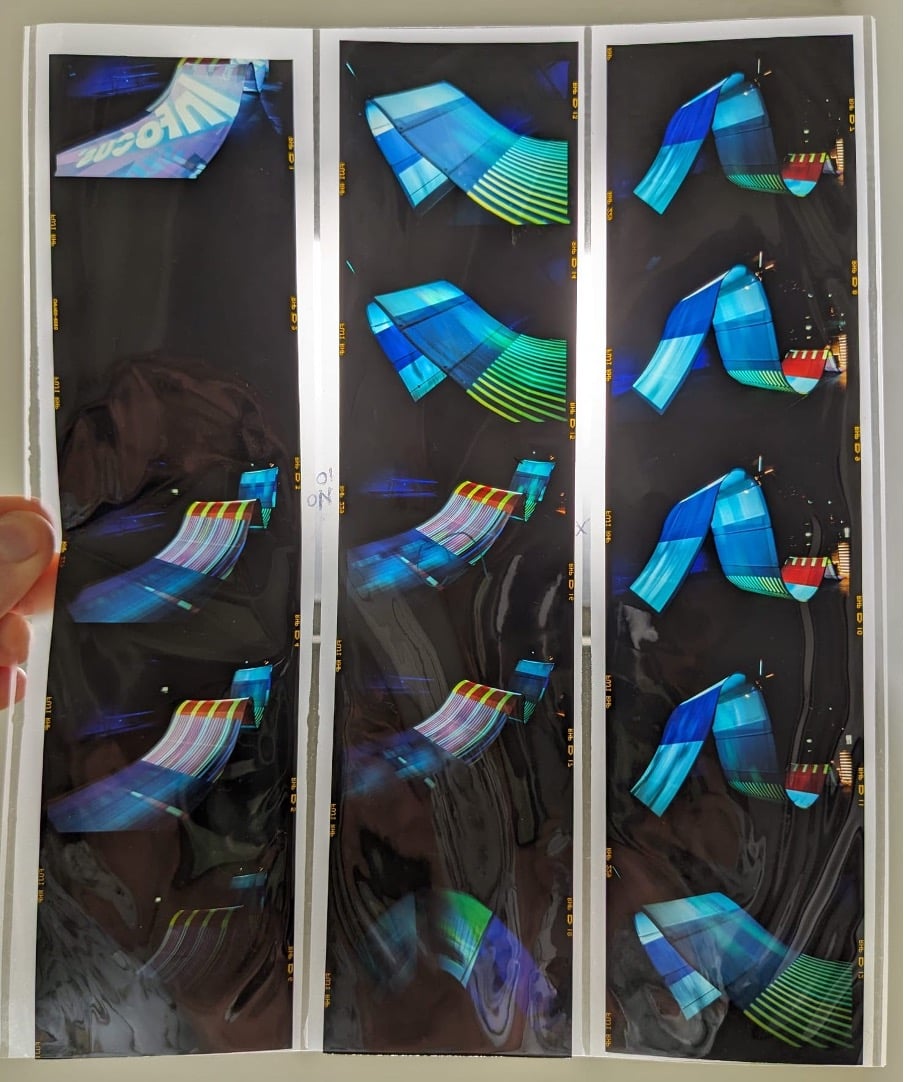It was a cold bright day in... March

Hi Stranger!
How are you? As it was about 2016 that I last sent out a newsletter let's reacquaint with this piece of internet gold from that same year. It's stop motion gorgeousness by animator Kirsten Lepore, and it says almost everything I wanted to say (aside from the bum line).
If you’ve received this email you have made it to my mailing list as a friend, supporter, family member, well-wisher, or beautiful rando. Whoever you are, whatever you want to be, welcome, I'm very pleased you're here. I would like you to stay, but feel free to unsubscribe.
In the newsletter I'll share current works, past works and new ideas we're working on and thinking about. Just to recap, I'm Julie, founder of Translating Nature, a studio where we produce artworks and experiences that connect people in new ways to the living systems around us using real-time data. These might be sculptures, large scale animated installations, sonic objects, or soundscapes.
Here's the latest - I hope you enjoy reading what we're up to...
What makes a town an art town? Launch of the Margate Artist Almanac

I’m lucky to have lived and worked by the seaside in Margate for over 8 years now, I love being on the edge of the land. It’s often talked about as a town full of artists (which it is). As places regenerate, artists and musicians often gather to live in cheap accommodation, they start projects, small businesses, run studios, put on events, and the place becomes more interesting and desirable. House prices rise, more people come, the place gets enlivened enough to be in Special Lists and written about by GQ and The Guardian. It's a tangible change and I’ve been wondering exactly how many artists does it take to make a town feel like the art community is one of its main attractions? Along with Natasha Caruana (and, to be honest, many other Margate residents) we are curious to see who is here and how long they’ve been around. The annual Margate Artist Almanac is a survey to do just that - we hope to gather data from artists, curators, producers and arts organisations to reveal the current state of play. If you are in the arts and are from or have worked in Margate (past or present) please add your data! Deadline 22 April 2024.
Current Exhibitions
Allusive Protocols
A series of three kinetic data-driven artwork prototypes - AP: Space, AP: Land and AP: Sea.

A new work, Allusive Protocols, is currently in Postscript of Silence at the Ming Contemporary Art Museum in Shanghai, China, curated by Iris Long and Sam Shiyi Qian. It was created in response to a research project investigating power, diplomacy and ecology in the material internet: the vast networks of cables, satellites and data-centres that connect us. These materials create an infrastructure of information that is often (mis)perceived as ephemeral, and not connected to real-world environmental impacts, yet the impact on global carbon emissions is very real.
The work continues my research into physicality of data, of using data streams from real-time systems to bring real world objects to life. These prototypical works move slowly and organically using shape memory metals, like mesmerising line drawings.
Allusive Protocols was commissioned by Data as Culture at the Open Data Institute with support from Invisible Dust. The work was developed as part of the Power and Diplomacy in Critical Data Infrastructures project.
Active Living Infrastructure: Controlled Environment (ALICE)
Web-based interactive artificial life animation and soundscape, physical installation powered with microbial fuel cells fed with urine.

Active Living Infrastructure: Controlled Environment (ALICE) is a “living” installation that communicates with microbes in real time by feeding them with urine. Harnessing the power of human waste, ALICE houses "living bricks" which use microbial fuel cell (MFC) technology to provide an alternative to fossil fuels and natural wastewater treatments. In this artwork, the bricks power a bio-digital interface which captures microbial energy production performance data to feed a visualisation, animation and soundscape created by a bacterial foraging algorithm and real-time data.
ALICE, fondly known as the Pee Ball or Wee Ball (send in your vote) debuted at the V&A London, and is now in two places at once – so not only generating its own electricity from urine it is defying current laws of physics. OG ALICE has been decommissioned and was on exhibition at the Dunkerque Triennial until earlier this year.
The ALICE v2 has updated microbial fuel cells and generates more power than version one thanks to a new design and dedicated gallery technicians at ZKM in Karlsruhe, Germany who feed it synthetic urine two-three times a week. ALICE v2 is a living experiment in the Renaissance 3.0 exhibition, curated by Annett Holzheid with Sarah Donderer, Nina Liechti and Beatrice Zaidenberg. I highly recommend a visit if you are interested in “New Alliances of Art and Science” - the show is on until 25 Feb 2024. Featuring over 35 artists, it includes a re-creation of an artwork from 1970 called Seek, a computer-built, self-reconfiguring maze for gerbils to navigate – the gerbils constantly disrupted the maze blocks as a robot arm constantly tried to rebuild it (this version is without live gerbils). I wrote about the work in the very first paragraph of my PhD as it’s a foundational artistic example of the convergence of living things and technology – I found it inspirational. When writing about Seek, I never imagined that some of my own work would be exhibited alongside it. What an honour.
ALICE initially received funding from the European Union’s Horizon 2020 and Innovation Programme under Grant Agreement no 851246, with additional touring support from Southampton University, ZKM and Fluxus Art Projects. Get in touch if you'd like to host ALICE (the decommissioned version doesn't smell!).
Featured past work: The Digital Wave (1998)
Last year marked the 25th anniversary of my first major artwork, Digital Wave. This interactive work was an imposing 15 metre long by 3 metre wide physical wave that had flowing generative images projection mapped onto it.
To highlight how unusual and innovative the work was, at the same time 25 years ago we saw:
🔎 The launch of a search engine company called Google (who knew what that would evolve into)
📀 The first DVDs were released
🖥️ There were a total of around 2.5 million websites (now there are 1.1 to 1.5 billion depending on which research you land on)
🌎 The World Wide Web was only 9 years old, and most people couldn’t access it
💰 We used cheque books to pay for things.
Digital Wave was a manifestation of the processes and transformations within environmental systems – such as waves and rainfall – and in existing and future technologies, algorithms and image manipulation. We wanted to physically embody the rate of change that digital technologies were going bring, and to highlight the flow of data that were to become such a powerful influence on our lives.
The journey begins as a camera grabbed a digital photograph of the viewer, transformed it generatively, then projected it through a series of computational filters down the wave-shaped structure. As they walked beside the animated flow, the viewer could tap the wave to release a pixel rain to merge with the images.
A colour print of each ‘digital journey’ was generated (by a Gestetner copier ofc), offering a tangible memento of the experience. The unique outputs could be taken by the visitor (NFTs weren’t around as I’m sure someone would have tried to monetise this bit).

Large-scale animated digital sculptures weren't the norm, so Digital Wave received a lot of attention. For me, the work marked the beginnings of the digital wave as data began to pervasively affect and reflect all of our lives. It was a significant turning point in my art practice, moving away from a traditional screen, working with many collaborators, enjoying the precarity of real-time systems.
Digital Wave was well received by almost everyone. TimeOut made it pick of the week, The Independent (when it still was) called it the "New Wave in Art", The Evening Standard dubbed it "Technological digitry" (insert eyebrow up emoji). However, Brian Sewell, the art critic of the time (now dead) said “It’s not art as it’s made with computers”. As he was a renowned misogynist and all round arse (not least for this statement: “There has never been a first-rank woman artist. Only men are capable of aesthetic greatness”)* I felt that his dismissal of the work was, in fact, high praise. What would he have had to say about AI art?
I thought it would be interesting to share how this commission come about. Through a university we were recommended to The Communications Group, a PR company, to propose an artwork concept for their campaign about Gestetner photocopiers transitioning from analog to digital technology. We came up with an ambitious idea which we said would require over 10 times the budget they had allocated (we were young and brave and resolute 👊). Fortunately, the PR company and their client saw the potential in the work and agreed to the idea, and to write the cheque. We were beyond excited to have the chance to bring it to life.
Years later I found that Digital Wave and the wider campaign (including student projects from the RCA responding to the Wave) had been written about as an exemplar in Public Relations Strategy by Sandra Oliver (2001), and Winning Reputations: How to be your own Spin Doctor by Chris Genasi (2002) which is completely bonkers (the latter contains chapters like “Reputation as the new religion: the powers behind the movement” and “Reputation as performance art”. Seriously. PR and marketing books are wild. It was interesting to reflect on the reach of the work pre-social media, the TV appearances and the newspaper coverage was estimated to have been over half a million k. From a £20k artwork. That’s some impact.
Digital Wave was commissioned by Gestetner and created in collaboration with Jonathan Jones-Morris and Stewart Rainbow (when we were known as Studio Fish). It was exhibited at the Science Museum, and, with thanks to Emma Quinn, at the Institute of Contemporary Art, London.
Happy birthday Digital Wave. Love you.
Bonus material: Watch a young me talking about the work and see clips of it featured on Tomorrow’s World (swoon) and Blue Peter (yep, we got badges! I still have mine because I can’t throw anything away).
If anyone (oh hai Ricoh) is interested in re-staging this exemplar digital artwork, please get in touch, I'm itching to re-make it with all new tech.
Decarbonising the web
We've got a new(ish) low carbon website, that we built from scratch using tools that tread lightly on the planet, because digital has a material impact. Check it out. If you want to calculate your website carbon emissions, you can use this tool, or this one.
Thanks for reading
That’s it for this newsletter, next month I'll share the work recently acquired by the Hiscox Collection, and do another delve into a past work that saw me and my mum interviewed on Women's Hour. See you then.
Feel free to drop me a line if you think there are too many commas in this newsletter, you know where the title came from, or if you have something else to connect about. I have missed you.
To being less of a stranger, but never less strange.
With love, Julie
Follow me on instagram, I’m trying to up my numbers yeh. Or LinkedIn. Or both.
This newsletter is brought to you by Buttondown, the most cost effective, sustainable, non-evil data policy newsletter platform I could find.
